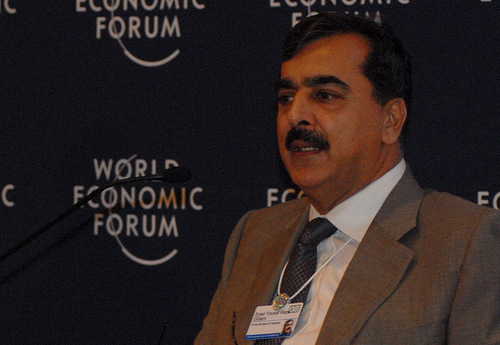It is an ‘unusual’ occasion in the history of the South Asian Association for Regional Cooperation (SAARC) that a summit is following by some positive developments in India-Pakistan relations. SAARC has long suffered from bilateral rivalry between India and Pakistan slowing its progress on a range of issues, particularly free trade in South Asia.
 Pakistani President Yousaf Raza Gillani. Photo credit: World Economic Forum
Pakistani President Yousaf Raza Gillani. Photo credit: World Economic ForumThere have been ups and downs in relations between India and Pakistan due to territorial and maritime disputes, accusation of cross-border terrorism, disagreements over the sharing of river waters, and curbs on trade. As SAARC aims at promoting economic cooperation via free trade in the region; therefore, the economic ties between India and Pakistan have been of great significance.
For long, Islamabad refused to declare India as a Most Favored Nation (MFN), as per the rules the World Trade Organization, because of the pending bilateral disputes, particularly over Jammu and Kashmir. India extended the MNF status to Pakistan in 1995.
The differences over trade also reached SAARC during dialogues on preferential and free trade agreements. Cutting the long story short, the volume of intra-regional trade is very low South Asia if compared with the EU, ASEAN, MERCOSUR etc., because of the India-Pakistan conflict and the apprehensions of the smaller countries on the dominance of the India in regional trade.
Prior to the seventeenth SAARC summit in 2011, after a bilateral meeting in Pakistan, the authorities in Islamabad decided to grant MNF to India. This would also result in India reducing non-tariff barriers on trade with Pakistan to enhance the volume of trade. Both parties have agreed to increase the number of items on the list of tradable goods by 2012 to ultimately increase the volume of trade to $6 billion by 2014.
It is a win-win situation for both India and Pakistan, and for SAARC. Also, for rest of the world often concerned over the possibility of a nuclear war in South Asia. The skeptics might reject the possibility of economic cooperation between India and Pakistan leading to improved relations and friendship in the long-run, but there are examples of traditional rivals achieving a meaningful level of cooperation through free trade, such as Argentina and Brazil. However, the India-Pakistan enmity is at a different level because both countries have fought four wars, including three major confrontations, and there are disputes to be resolved. Nonetheless, the recent developments give some hope.
Often less complimented is the value of multilateral forums with reference to providing ‘informal’ opportunities to heads of state to discuss bilateral issues. For example, the process of bilateral ‘peace’ dialogues between India and Pakistan has been stalled after the terrorist attacks on Mumbai in 2008, but the leaders of both countries have met on the sidelines of multilateral forums, particularly SAARC.
The prime ministers of both countries, Yousuf Raza Gillani and Manmohan Singh, have met four times in the period of less than three years, including twice during SAARC Summits (Thimphu 2010 and Addu 2011). The meeting in Thimphu was a breakthrough because that paved the way for a ministerial meeting on dissolving tensions over the issue of cross-border terrorism. The meeting between at the ministerial level could not produce any results due to the insistence of Pakistan to resolve the Kashmir dispute. The meeting in the Maldives in 2011 had its own significance because this time both leaders met in the environment of some optimism with reference to improving bilateral ties after trade talks and the decision of Pakistan’s cabinet to grant MNF to India.
What a coincidence that right when the Islamabad-Washington relationship is at its lowest ebb, the bilateral ties between Islamabad and New Delhi are improving. The recent developments, especially Pakistan’s decision to grant India the status of a most favored nation, depicts the growing level of wisdom and realism existing in the political and policymaking circles. Not surprisingly, this progress is appreciated by the US, which needs the support of both India and Pakistan after the withdrawal of troops from Afghanistan. The withdrawal of the US and the troops of its allies is expected to be completed by 2014.
If the rivalry of Indian and Pakistan has been a constraint to the SAARC process than then the friendship between the two could very much be the long-awaited push needed by the Association to implement its agenda on a range of issues, from free trade to collective against terrorism and transnational crimes.









